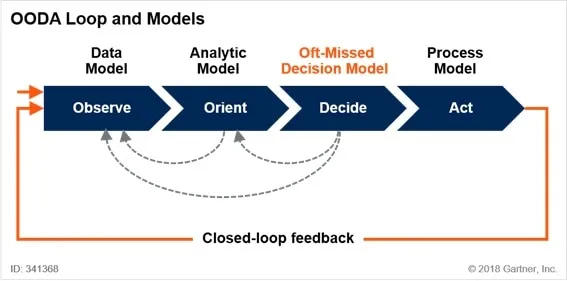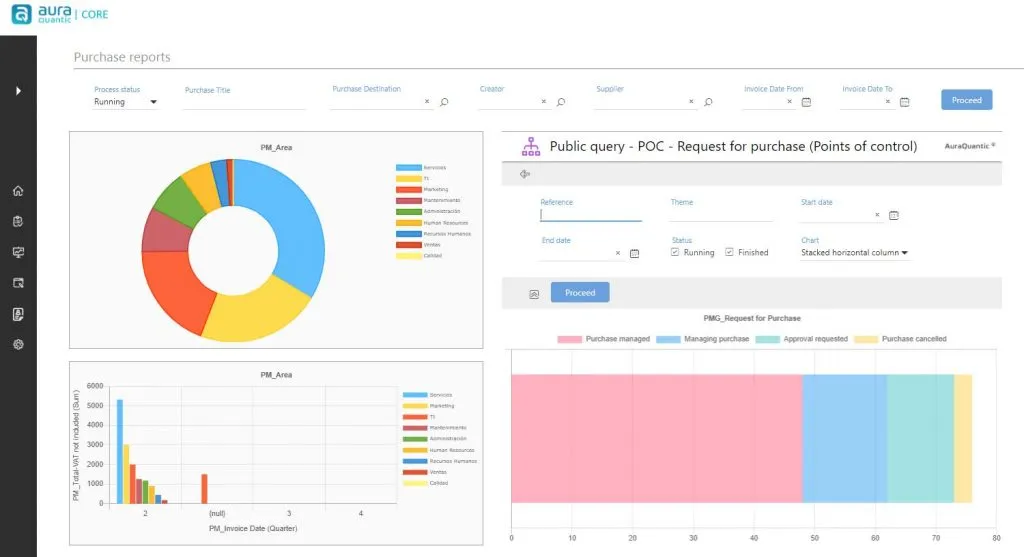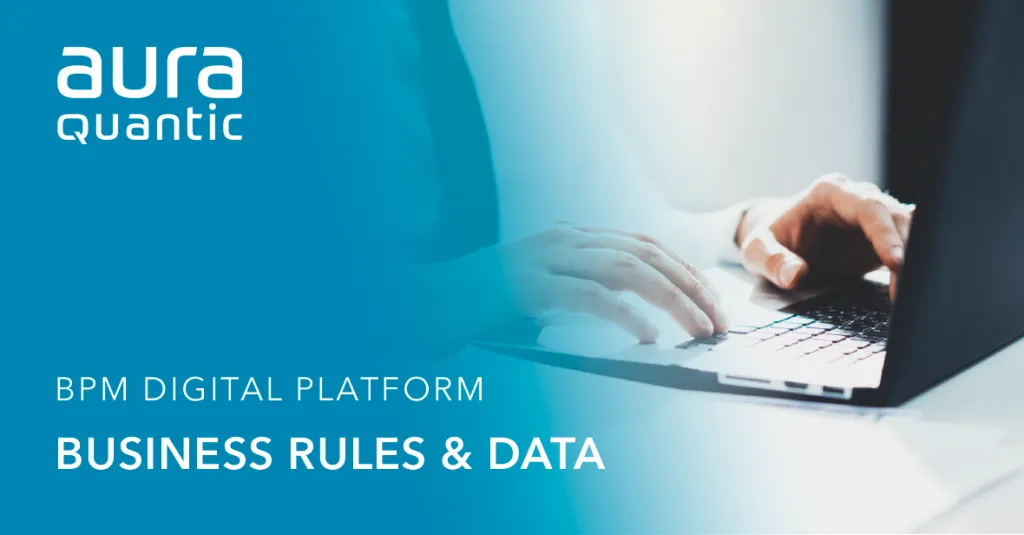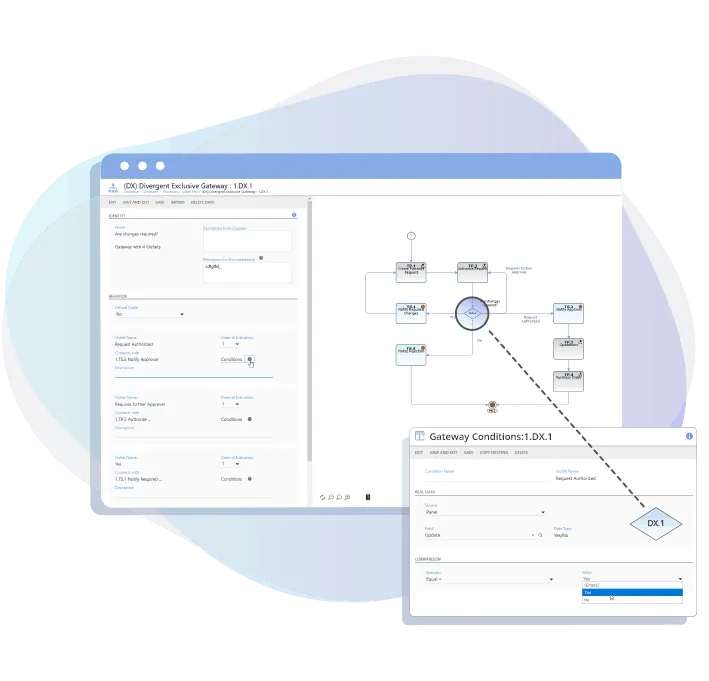Decision management
Blog: AuraQuantic Blog
Decision management aims to design, build, and maintain systems that produce structured or scheduled decisions.
Structured or programmed decisions solve problems that arise frequently, and that already have an established procedure to address them. In other words, we can generate a structured decision to respond to a problem that is repeated with a certain form of ductility and to define, analyze and forecast.
Decision management leverages data generated by other systems such as business process management (BPM) to improve operations, and enable fast, consistent, and accurate decisions based on facts.
Initially, decision management focused on insurance and loan underwriting, mortgage approval, financial negotiation, logistics and public sector applications, but today it is also being applied for fraud detection, risk management, cross selling, supply chain management, etc.
WHEN SHOULD DECISION MANAGEMENT BE USED?
We must make use of decision management to solve complicated problems which are structured and understood well enough to be solved by software. These tough decisions involve one or more of the following:
- Multiple decision criteria and substantial calculations
- A large amount of data or various types of data
- Reusable decision logic
- Modified repeated decision logic
- Traceable and auditable decision making
- Compensation between competing objectives
- Multiple decision models acting together as sets
Trivial decisions must be addressed through application logic, and decision management is not necessary in this case. For this type of decision, AuraQuantic incorporates different gateways that can redirect the process flow depending on whether a series of conditions are met. These can allow one (convergent) or several (divergent) outputs and apply the logical operators XOR, OR, and AND.

Most decision management applies to repetitive operational decisions. For example, an insurance company can develop a scoring model using machine learning, and a set of rules to accept or reject parts based on certain parameters such as the reliability of the client and the amount of the operation, and then apply this automation to thousands of parts.
DECISION MANAGEMENT: AUTOMATION OR SUPPORT
Each decision requires a different decision management technique. In general, the structure of an operational decision can be analyzed using the following model: observe, guide, decide and act.

- In the observation phase, data is collected.
- The data is put into context and the implications considered in the orientation phase.
- The determination of what to do is done in the decision phase.
- And finally, in the action phase the response is executed.
Automating decisions
Many repeatable decisions can be automated because the decision-making process is fully structured and predictable.
For example, a bank can develop an automated decision management model to accept or reject credit card transactions and apply it to millions of transactions.
Decision management to support decisions
In some cases, it is not possible to structure all the logic involved in a decision and we use decision management for support.
A software decision service, based on rule processing or other prescriptive analysis, can generate a proposal that is passed on to one person, who ultimately makes the decision.
Returning to our example of the insurance company, we could compile the score scales provided by machine learning and the business rules to offer a first assessment to the person in charge of validating a claim.
Decision support without decision management
In many business scenarios, analytics and BI are only used in the observation and orientation phases.
This can be in the form of BI reports, data visualization dashboards, business activity monitoring (BAM) systems, or ML models for predictive purposes.

SELECT TECHNIQUES AND TOOLS ACCORDING TO THE NATURE OF THE DECISIONS
Although there are many techniques and tools to approach decision management, all of them make use of rules to evaluate conditions and make decisions.
Rules processing
According to Wikipedia, ‘Business rules describe the operations, definitions and constraints that apply to an organization’.
These types of rules are appropriate for decisions based on deterministic factors found in corporate policies, regulations, and also in the subjective judgment of experienced entrepreneurs, or personal perception.
Currently some software platforms such as AuraQuantic offer solutions to create and use in applications and include specific engines to execute them.

Specifically, AuraQuantic offers four types of business rules that can be applicable without human intervention and therefore applicable to automated decision-making:
- Assignment: Provides the value of one variable based on the value of another.
- Textual: Your information is expressed through text and has unlimited storage and use.
- Inference: Returns the result as a consequence of combining a number of scores from different criteria.
- Calculation: Perform calculations of all kinds for any variable.
Machine learning
Being able to anticipate market needs is every company’s dream. Traditionally, predictions have been based on people’s analytical ability to draw conclusions from their experiences.
However, thanks to the capabilities of Machine Learning, this technology can now be used to generate predictive models, which based on historical data are able to decide which possibilities are more feasible.
However, predictive analytics cannot perform decision management if it is not combined with a rule.
For example, a Machine Learning model can be used by an insurance company to quantify the degree of reliability of a customer claim, but a rule such as “If the customer’s degree of reliability is >9.5 and the amount of the claim is <$500, then it can be approved ”.
Optimization
Optimization is especially important in today’s business environment. And companies should use the prediction of metrics and results to generate data that helps with decision making.
Simulation
When we use simulation software, the program introduces randomly generated input values and returns results after multiple trials. This same concept can be used to simulate the effect of a proposed decision service before it goes live and to estimate alternative decision results.
Knowledge graphs
Knowledge is a set made up of information, rules, experience, interpretations, relationships, and connections in a context and in an organization, which constitute the basis for action and decision-making
Knowledge representation and reasoning is an area of artificial intelligence that takes advantage of techniques such as knowledge graphs or semantic networks to allow descriptive, diagnostic, predictive or prescriptive analysis.

In other words, with a knowledge graph, the stored information is organized to make it accessible and useful.
In a decision management model, the knowledge graphs are used to map the entities of the decision model, and the path of the graphs is used to model the decision process.
The post Decision management appeared first on AuraQuantic.
